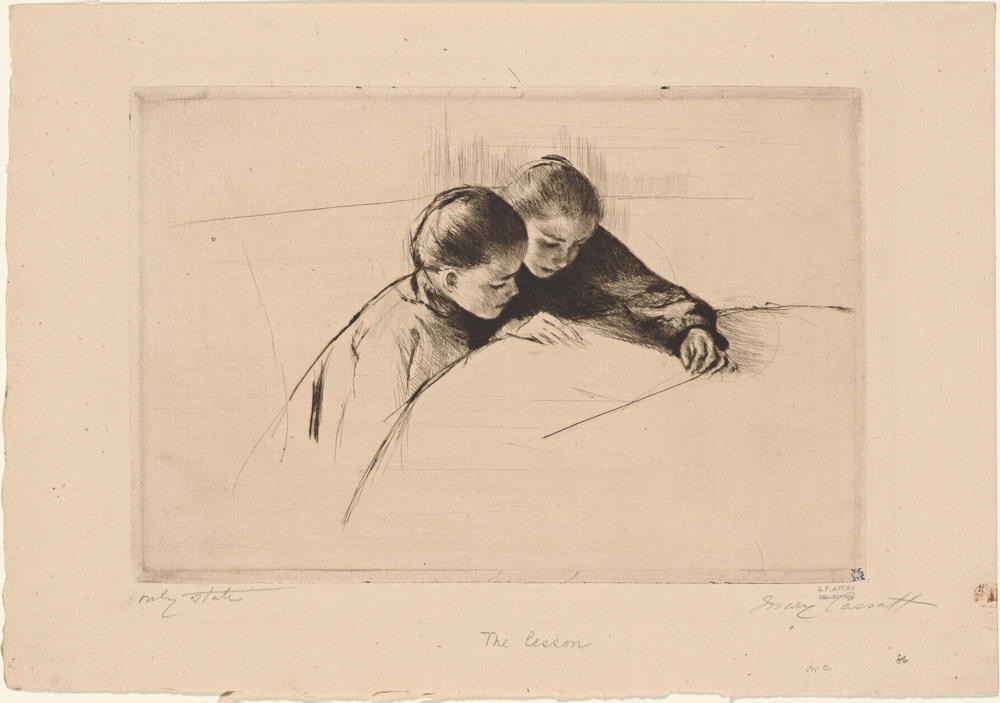DeconstructingHistory

Mary Cassatt: The map (1889)
" … anybody interested in this Fambly's history will have to rediscover it for themselves …"
In the end, or nearing the end, I carry too many stories. Each seems especially important, even magical, for they represent discoveries. They were once lost, and now they're found, but in finding them, I overwhelmed my ability to retain them. What I initially complained about as clutter, I might have merely transformed into another form of clutter, open tabs rather than dog-eared loose-leaf notebooks, or open tabs and loose-leaf notebooks with fresh pieces of paper slipped in between the pages. I might have made the archive worse. This might represent the curse. We firmly believe that only we will make this world coherent before discovering that the best we mustered was a different form of the same old incoherent mess.
Maps hold some hope. They seem at least spacially superior to the usual trees of data. They hold the potential to contain the data explosion, though the data demands some decomposing before it can deliver on this promise. I'm called to create tables and arrays where I can formally relate the data by position. What might be index, and what, inferior referenced material? I have too much data to represent everything in a single array and also far too little data to construct anything like an adequate display. I experimented, starting with a spreadsheet, which ended up being at least an order of magnitude too complex. Maps are simple. Their primary index always represents some location. Nobody's ancestors stayed in one place or necessarily reported on their address changes. I know when some were born, buried, and married, but not where. For others, I only have some of that data—the map-making software chokes on blanks.
I'm up again at midnight trying alternative displays, finally succeeding, albeit in what should have been a predictably limited fashion. I finally see that I'll need to simplify. I copy and paste, delete, and re-sort. I discover layers. I can display thin data threads, each within its unique container, then overlay the resulting layers on top of each other to produce a more finished map. I create a Births spreadsheet featuring only four bits of data: GrandParent Generation Number, Name, Date, and BirthPlace. I choose to connect everything by place because I am, after all, attempting to create a map. The software rewards me with tabs displayed on a map. When I click a tab, it displays the associated ancestor data: their generation, 0-20 in this example, their location, the date, and the place. I can display this data as a table. That's layer one, done!
I repeat the process for Death Dates, creating a unique layer for those. Once combined, I display a map of twenty-one generations of my paternal great-grandmother's family, back to The Isle of Wight in 1250. The display still isn't entirely to my liking. I continue to find additional embellishments, such as a baby icon for birthplaces and a separate color for death places. The mapping software's documentation seems to be tutorials created by self-proclaimed power users. They tend to ramble something terrible and frequently fail to hold my attention. My impatience to accomplish something might be my own worst enemy. I can't seem to wait long enough to learn before I feel compelled to engage, thereby producing error and dissatisfaction. If I'm still dissatisfied, I must still be learning.
No matter how I struggle, the historical data will remain incomplete. My maps might only manage to feed my ego. I know for sure that sometime in the future, a casual decision made in some corporate boardroom might render moot all the effort I've exerted to decompose and preserve this data. These stories, too, might well be erased without very much of a trace. Those shreds preserved in illuminated manuscripts might ultimately prove to be the longest-lasting. Those texts are unlikely to be lost to a data breach or fall victim to a malign denial of service attack. I will retain my Aunt Colleen's dog-eared loose-leaf notebooks even though I'm freshly aware of their serious shortcomings. It seems likely that anybody interested in this Fambly's history will have to rediscover it for themselves and that the true purpose of even having a history might be to lose then find it with each successive generation. Here's the latest iteration of the map prototype I mangled earlier.
©2024 by David A. Schmaltz - all rights reserved


